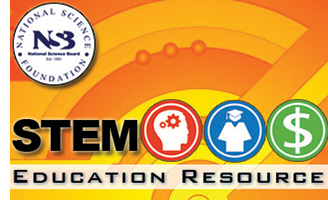NSB Releases New Resource on STEM Education & Workforce

Richard Fienberg Running Hare Observatory
Adapted from a National Science Foundation press release issued on 28 October 2014:
It just became a lot easier for educators, students, parents, policymakers, and business leaders to learn more about national trends in education and jobs in science, technology, engineering and mathematics (STEM).
The National Science Board (NSB) has released an interactive, online resource featuring new and updated data and graphics about STEM education and workforce in the US and providing facts on topics such as student proficiency, college degrees in STEM fields, and jobs in science-related occupations.
"The STEM fields are critical to the nation's economic future," said Kelvin Droegemeier, vice chairman of NSB, the governing body of the National Science Foundation (NSF) and advisor to the president and Congress. "Our ability to innovate and compete depends on how well we do in science and technology. The National Science Board developed this one-stop answer center to provide a reliable resource on STEM education and careers."
The resource features 60 central questions, organized by education level and the workforce, with multiple data points, graphs, and maps providing the answers to each question. Users can view the latest data, consider trends, easily download both data and graphics, and share these data through email and social media. Links to additional analysis are provided for each topic.
"Discussions about STEM education and the workforce are often limited to generalities," said Droegemeier. "This resource is an easy way to find the facts on what's really going on, how we're doing, and where we're headed. It's part of the Board's support for STEM education and its commitment to providing high-quality, objective information."
Droegemeier chairs the NSB committee that oversees the preparation, review and distribution of the Science and Engineering Indicators report, upon which the data for the new STEM Ed resource are primarily drawn.


